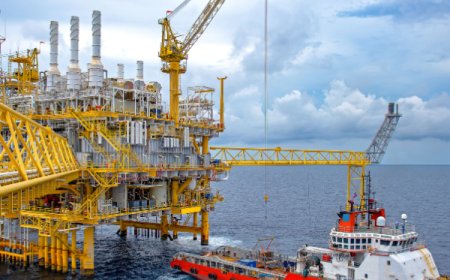Old Dam In Kerala
Mullaperiyar, the most debated old dam in Kerala, raises concerns due to its age, seismic risks, and monsoon impact, drawing attention from environmentalists and government bodies alike.

Kerala, the land of lush greenery, serene backwaters, and majestic hills, is also home to one of the oldest and most debated engineering marvels in Indiathe Mullaperiyar Dam. Completed in 1895, the Mullaperiyar Dam stands as a testament to 19th-century civil engineering and is the Old Dam In Kerala. Built over the Periyar River in the Idukki district, this masonry gravity dam has withstood the test of time for over 120 years. Yet, its age and location are not the only aspects that make it unique. What truly sets it apart is the complex history, interstate politics, and environmental debates that continue to swirl around it.
A Glimpse into the History and Construction
The Mullaperiyar Dam was constructed during British rule, with the foundation laid in 1887 and completed by 1895. It was designed by British engineer John Pennycuick, who braved several obstacles, including harsh weather and lack of resources, to bring the dam to completion. Built using lime surkhi mortar, a traditional construction material made by mixing lime, burnt brick powder, and jaggery, the dam has become an enduring symbol of colonial-era engineering.
The primary purpose of the dam was to divert water eastward from Keralas Periyar River to the rain-shadow region of Tamil Nadu, primarily for irrigation. To enable this, a lease agreement was signed in 1886 between the Travancore kingdom (which later became part of Kerala) and the Madras Presidency (now Tamil Nadu). Under this 999-year lease, the responsibility for the dams operation and maintenance was handed over to Tamil Nadu, even though the dam lies well within Keralas territory.
Location and Structure
The Mullaperiyar Dam is strategically located on the Periyar River in the Thekkady area of Keralas Idukki district. It creates the Periyar Lake, which is a significant water source and forms the heart of the Periyar Wildlife Sanctuary, one of the most famous protected forest regions in India.
As a masonry gravity dam, Mullaperiyar relies on its weight to resist the horizontal pressure of the water it stores. Standing at a height of 53.6 meters (176 feet) and spanning 365.7 meters (1,200 feet) in length, the dam plays a crucial role in the water management system for the southern states.
Management: A Unique Cross-State Arrangement
One of the most interesting facets of the Mullaperiyar Dam is its management. Although it is situated in Kerala, the dam is operated and maintained by Tamil Nadu, thanks to the historical lease agreement. This has created a unique and complex administrative scenario where Kerala bears the geographical and environmental risk, but Tamil Nadu enjoys the direct benefits, especially in terms of water for agriculture, drinking purposes, and hydroelectric power.
This arrangement has led to several legal and political disputes, primarily centered around issues of dam safety, water levels, and the need for modernization or decommissioning.
Purpose and Benefits
The original intent behind the Mullaperiyar Dam was straightforward: to alleviate drought conditions in the arid regions of Tamil Nadu, especially the Madurai and Theni districts. Over time, the dam has evolved to serve multiple purposes:
-
Irrigation: The dam irrigates over 2.08 lakh hectares of agricultural land in Tamil Nadu.
-
Drinking Water: It provides drinking water to thousands of people across towns and villages.
-
Hydroelectric Power: Though the hydroelectric potential is modest, it contributes to the regional energy grid.
-
Environmental Importance: By forming the Periyar Lake, the dam has contributed to the rich biodiversity in the region.
Safety Concerns and Ongoing Debates
Given that the Mullaperiyar Dam is now over 120 years old, there have been growing safety concerns, especially in light of Keralas vulnerability to earthquakes and heavy monsoons. Seismic studies have indicated that the dam lies in a Zone III seismic area, raising alarms about the potential consequences of structural failure.
In 1979, cracks were reported in the structure, prompting Kerala to advocate for a reduction in water levels and even the construction of a new dam downstream. Tamil Nadu, on the other hand, has repeatedly assured that the dam is safe following reinforcement measures and retrofit works carried out over the years.
The issue has been taken up multiple times in Indias Supreme Court, which has ruled in favor of maintaining water levels at a safe but effective capacity. Still, the matter continues to be a point of friction between the two states, with public sentiment, media discourse, and political interests adding further complexity.
A Tourist Attraction Amidst Controversy
Despite the controversies, the Mullaperiyar Dam remains a popular tourist destination. Located near the Periyar Wildlife Sanctuary, the dam offers breathtaking views of the lake and surrounding forests. Tourists visiting Thekkady often stop by to admire the scenic beauty and understand the historical significance of this engineering marvel.
Boat rides across the Periyar Lake allow tourists to witness the dam up close, while also enjoying sightings of elephants, sambar deer, and even tigers in the sanctuary. For many, the dam serves as a fascinating intersection of history, nature, and engineering.
Conclusion
The Mullaperiyar Dam is not just the oldest dam in Kerala; it is a structure that encapsulates more than a century of engineering brilliance, interstate cooperation and conflict, and environmental significance. Built in an era where modern tools were scarce, and human grit reigned supreme, the dam has continued to serve millions of people even in the 21st century.
However, its age also brings with it a set of modern challengesfrom safety issues to environmental concerns, and from political disputes to legal battles. It is a classic example of how infrastructure built in the past continues to influence present-day governance, resource management, and public policy.
As India continues to grow and modernize, the future of the Mullaperiyar Dam remains a critical topicone that demands balanced decision-making, scientific evaluation, and above all, cooperation between states to ensure that this historic structure remains a boon and not a burden for future generations.





























